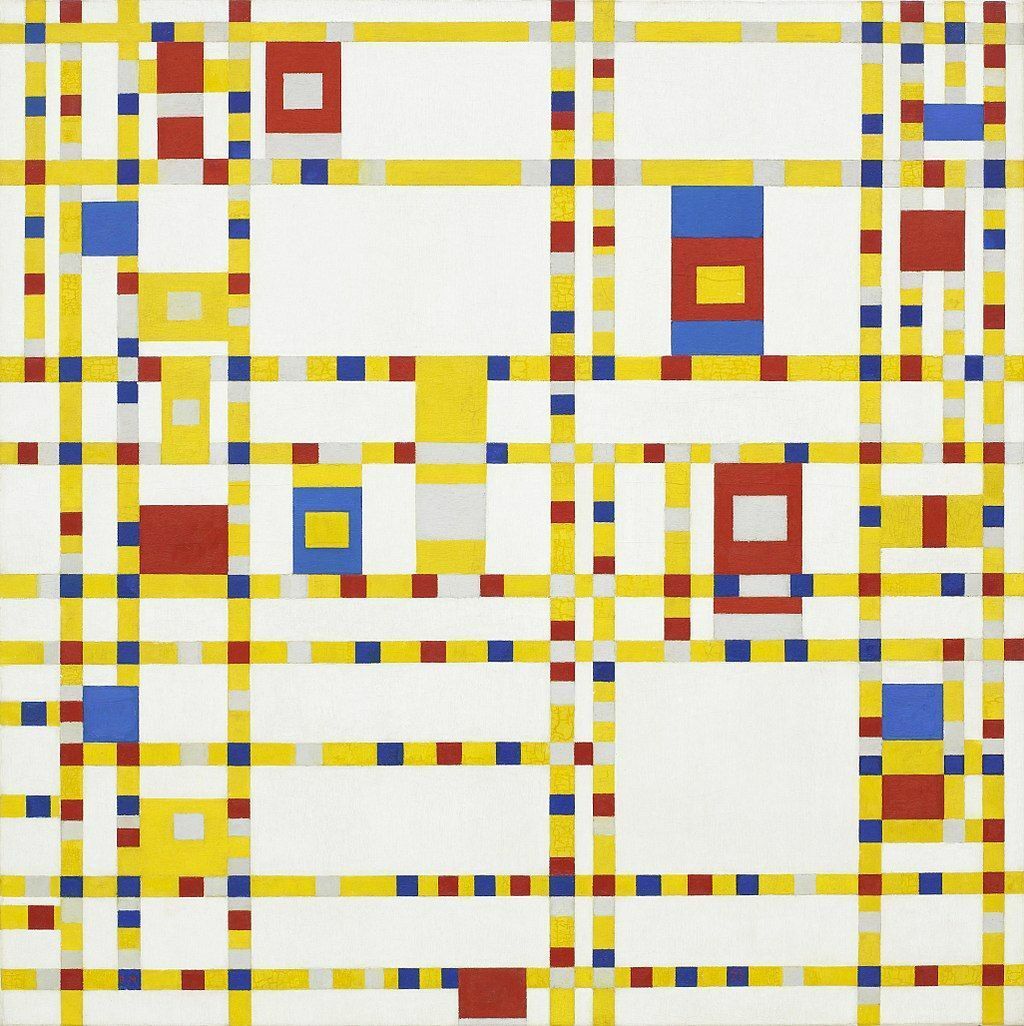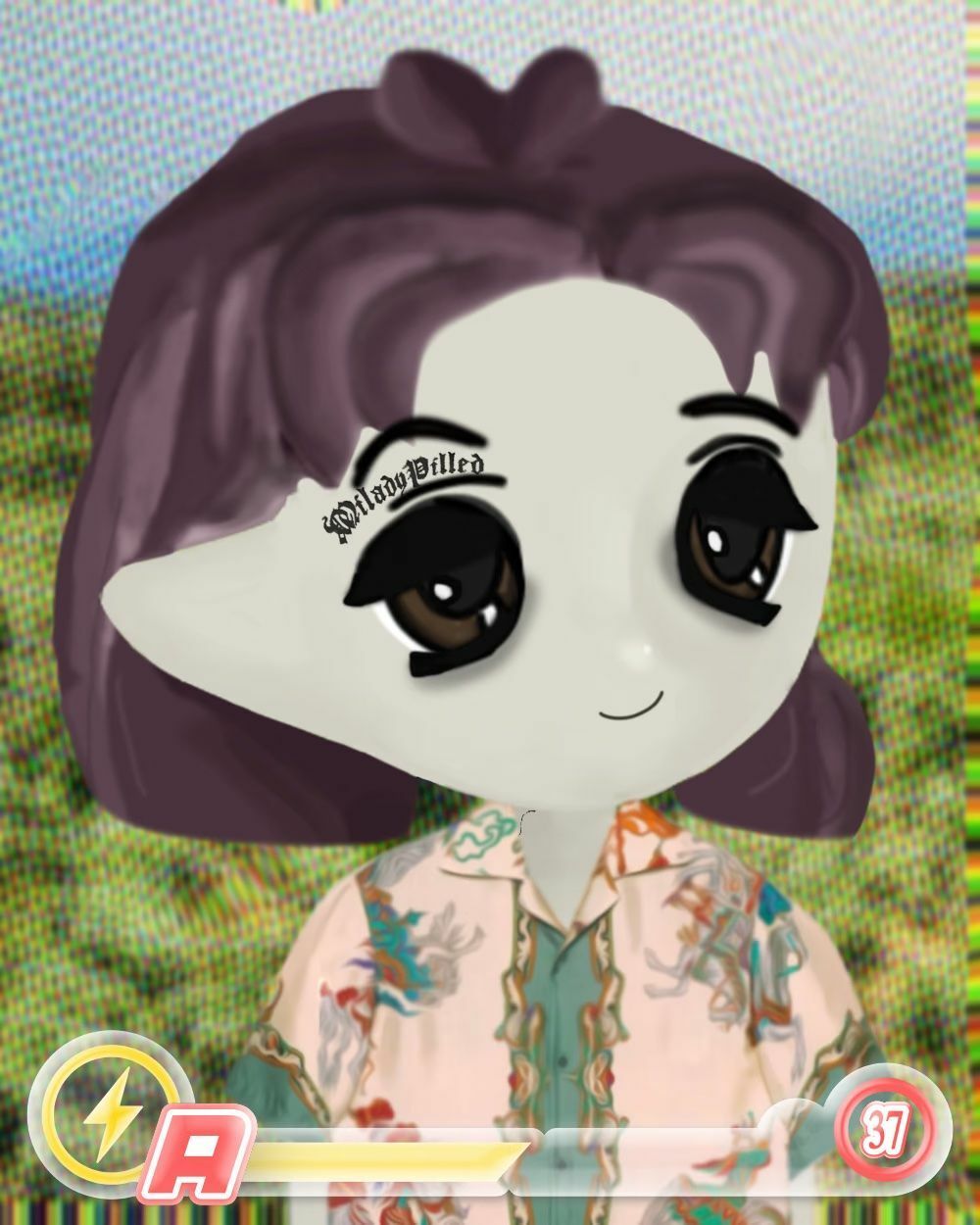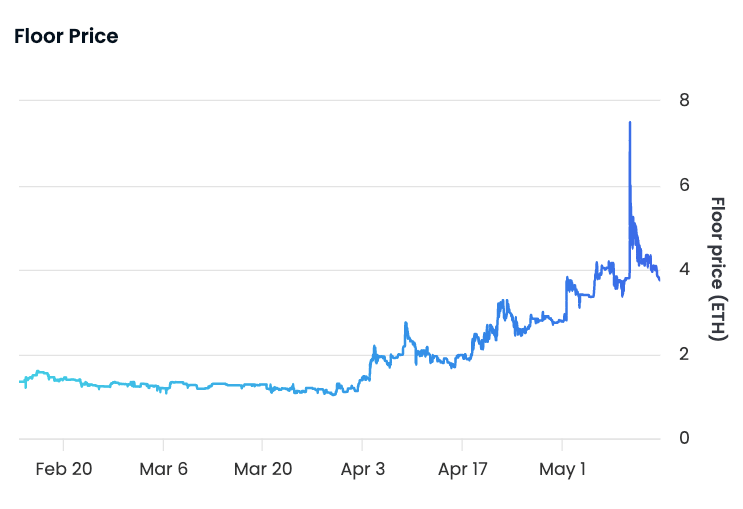
Broadway Boogie Woogie (1942) by Piet Mondrian
Otaku: Japan's Database Animals (2001) is a theoretical bedrock of Milady, which I described in Signs #77 (March 2022) as "the only properly accelerationist digital art project in the world," and "the dark truth of crypto culture."
As I've said before, one of the most exciting aspects of crypto is that theory and culture become investable. Institutional thinkers in "Cultural Studies" and "Social Theory" will increasingly be forced to prove their alpha or disappear.
That means if you actually have non-trivial insight about society, art, or culture—which others don't have—you need to be publishing it and making bets accordingly. In the future, this will be the criterion for determining which cultural works make it, and which get discarded.
When I first learned about Charlotte Fang and the Milady project, I had a hunch that here was something special.
In an interview somewhere, Fang cites Hiroki Azuma's 2001 book Otaku: Japan's Database Animals, so I went and read it. I wasn't moved to write about the book then, but it validated my hunch: I was convinced that Milady is a sophisticated artistic operation with an erudite, thesis-driven approach.
Then last week, Elon Musk tweeted a Milady image and a lot of new people started asking questions about the project, so I went and dusted off my copy of Otaku.
As an unwavering Milady bull who defended Fang and Milady through their "cancellation" event last year—which was bad enough to make even Barrett wax moralistic (compare Contain #111 to Other Life #192)—I'd like to review the book with an eye toward the following question: What did Azuma get correct, and how did Charlotte Fang express Azuma's insight as a bet, in the form of artistic cryptographic assets?
Database Consumption
Postmodernism has changed how we consume and value media. Famously, postmdodernity was defined by Lyotard in The Postmodern Condition (1979) as "incredulity toward metanarratives."
The implication is that it's no longer possible to consume media as if it has any kind of larger meaning. You might read a novel and think about big ideas, but ultimately everything dissipates except the pleasurable or edifying experience of reading the novel while you're reading the novel. Whereas in the nineteenth century a really powerful book could have a causal impact on the creation of a revolutionary political leader, as the book and the young man resonate together in a larger social story. Today that is over. That's postmodernity.
According to Azuma, humans have evolved a new way of consuming media. The new way of consuming media was pioneered in the early 1980s by a particular Japanese subculture known as otaku. The otaku are shut-ins who essentially drop out of mainstream society in favor of obsessive media interests (typically involving anime, video games, and computers). Azuma claims the otaku enjoy a new style of media consumption he dubs database consumption.
Database consumption involves the immediate personal enjoyment or appreciation of specific artistic elements within a work—with no reference to anything larger, not even necessarily to the work "as a whole." These emotionally competent elements are called moe-elements. Moe is otaku slang for feelings of affection generated by media. You should think of moe as the atomic unit of emotional resonance associated with any particular artistic datum (this smile here, these eyes over there). If an ear or a hat attracts your attention and makes you feel a tinge of something, then the ear or the hat can be described as moe-elements.

Milady #1295 (mine). Milady eyes are the defining moe-element across the set (of 10,000), but every individual Milady features different moe-elements, e.g. tattoos, hats, etc.
Although we've lost the capacity to believe in grand narratives, we can still imagine all possible moe-elements in a larger database. For the otaku, the database itself becomes an object of inquiry and attraction.
The otaku engage in practices of listing, categorizing, and "reading up" all of the various moe-elements within a work. Then new works are created by rearranging moe-elements drawn from the database.
The database does not have a transcendent meaning, but it does provide a nearly infinite space of possible permutations. The database does not provide meaning so much as a vast parameter space for emotionally resonant co-creation. Thus, database consumption is a phenomenon tightly correlated with other postmodern media formations you've probably heard of, e.g. fandom, fanfic, and remix culture more broadly.
I don't know anything about anime myself, but I found compelling Azuma's case study comparing Mobile Suit Gundam (1979) to Neon Genesis Evangelion (1995). In the first case, fans were obsessed with the story, how it would finish, and the entire, specific, closed world of Gundam. In other words, they were invested in one discrete, grand narrative. But the fans of Evangelion did not really care about the specific world of Evangelion. They only cared about the basic variables of the character designs, which they catalogued and classified and remixed.
The move to database consumption even changed how the corporate media players monetized. Gundam had several well-known sequels, all of which were subordinated to the one grand narrative. Evangelion saw many secondary elaborations but no sequels. Instead they spun out "rebuilds" or new films retelling the story in different ways, and a ton of remixed merchandise, from games to erotic telephone cards. All of which were very far removed from the originals. Evangelion was really just an aggregate of information without a narrative, according to Azuma, what he calls a grand non-narrative. The grand non-narrative is the basis for a large variety of what he calls small narratives, or just personal relationships to certain mixes of moe-elements.
Importantly, in my reading of the book, database consumption should not be understood as a niche regional phenomenon. Azuma's analysis seems to imply that the otaku were only the first harbingers of a universal change. What happened first with the otaku will eventually happen to all of us. Database consumption will become increasingly widespread as more and more people discover this solution to postmodern malaise. Furthermore, the database aspect can be expected to intensify to the degree that technology accelerates various database-driven technologies.
If you think Azuma is correct, and then you observe the emergence of a historically novel type of database—the blockchain, or distributed ledger, which just happens to include the automated financialization of database entries—what would you do?
You would create 10,000 anime portraits all exaggerating one specific Japanese moe-element known to be highly affective for many people (e.g., massive glassy eyes), vary a dozen other moe-elements that distinguish different types of social tribes, and then publish the database of moe-elements with a user-friendly interface for filtering and sorting.
You would launch Milady.
The New Market for Philosophical Theories
Countless volumes of academic theory have been published, which—to a casual observer—look a lot like Azuma's book. The book reads like a fairly standard monograph in "media studies." If I read this book in 2001, I would not have been moved to review it. It's interesting enough, but this kind of monograph is always vulnerable to the objection that it's a just-so story: Sounds interesting, maybe it's right; but it could also be totally wrong, and if there's no way to test it, all you can really say is "eh."
But now that cultural artifacts can be put on-chain, organized and distributed into society according to variable hypotheses, and immediately trade on the open market, it's now possible to empirically test theories advanced by abstract philosophical humanists.
Before crypto, it would be difficult to know if Azuma's theory contains real alpha. In other words, is he saying something that is both true and not already widely believed? Maybe, but maybe not. Scientific method, i.e. the only known protocol for intersubjective convergence on the truth in adversarial contexts, only works if an idea can be expressed as "change X and Y will change thusly."
If the design and implementation of Milady was influenced by this book, as Fang says, then Milady is, to at least some degree, a financial index on its thesis. Obviously, it's a noisy index with other variables mixed in, and the situation is not so clean as I make it sound (someone could claim to be influenced by X and fail to implement X, etc.).
But if we grant that Milady materializes Azuma's thesis, even partially, then the rising and falling of the Milady floor price is, in some very real sense, a measure of the truth of Azuma's theory.

Milady floor price, OpenSea
First of all, the Milady characters are clearly optimized to produce real moe. The big glassy eyes are objectively a stronger moe-element than any NFT are before Milady. As Charlotte Fang says, the idea was to "turn the cute-aggression dial up to 11." They knew exactly what they were doing.
Second, the execution of the Milady project (i.e. the social messaging and memetic strategies) consciously fosters the will-to-remix associated with database consumption. This is why the Milady value system is accelerationist and post-authorship: There's no "intellectual property" component (as some NFT projects have attempted), and stealing is encouraged. Everything is designed to maximize the surface area for remixing.
In fact, the Milady system is even closer to Azuma's theory, in yet another way. Kojève once said, in his famous lectures on Hegel, that, at the end of history, we face only two choices: Animality, which is the American choice, or snobbery, which is the Japanese choice. According to Azuma, the first stage of otaku was snobbish. The otaku saw database consumption as a more enlightened and sophisticated way of grappling with the meaninglessness of the world. They held a cynical posture where they knew it was all meaningless but, because they knew it was meaningless, their learned appreciation for the database could be felt as all the more heroic.
The snobbish otaku would ultimately give way to an animalized otaku simply because of the natural increase in capitalist efficiency over time. As the market gets smarter, it can generate any number of moe-elements to meet every possible dream, and the result becomes a satiated and complacent, animalistic otaku.
Otaku, Azuma says, are only interested in particular kinds of information. They will passionately talk with others to the degree that talk is generating the information they are interested in. But they will also animalistically depart from conversations as soon as the desired information is no longer flowing. Once again, this is accelerationist, network sociality par excellence and it's something that Charlotte Fang understands very well.
This is the same sociality described by Deleuze as imperceptible:
“What I want is to do my work, for people not to bother me and not make me waste time, yes, and at the same time, I want to see people, because I need to, like everybody else, I like people, or a small group of people whom I like to see. But, when I see them, I don't want this to create the slightest problem, just to have imperceptible relationships with imperceptible people, that's what is most beautiful in the world. You can say that we are all molecules, a molecular network.” —Deleuze
The Milady brand is unique in the first inning of crypto culture because it is the first properly constituted molecular network.
In short, Azuma's book is turning out to be a good one.